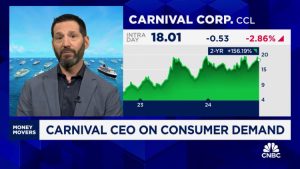Share this page:
National Savings & Investments (NS&I), the government’s savings provider, has increased savings rates on two of its accounts. The move comes just a week after the Bank of England upped its base rate and, it’s the latest signal that the tide is starting to turn for savers.
So, how do NS&I’s new offerings compare to other accounts out there? Let’s take a look.
Savings rates: what has NS&I announced?
NS&I has upped the savings rates on its ‘Direct Saver‘ and ‘Income Bond‘ accounts by 0.15%. As a result, both of these accounts now offer savers 0.5% AER variable interest.
Despite their contrasting names, these products are essentially easy access savings accounts with just two small differences between them:
- NS&I’s Direct Saver allows you to save from £1 up to £2 million and interest is paid yearly.
- The Income Bond allows you to save from £500 up to £1 million, with interest paid monthly.
NS&I chief executive Ian Ackerley explained how the boosted rates could help the savings provider hit its net financing target. He said: “The new interest rates will ensure that our products are priced in line with the broader savings sector. The increase will also help us to meet our annual Net Financing Target for 2021-22 of £6 billion, in a range of £3 billion to £9 billion.”
How do the new NS&I savings rates compare?
The news that NS&I is upping its savings rates will be a welcome boost for long-suffering savers worried about the era of sluggish rates continuing. And while NS&I hasn’t passed on the full benefit of the recent base rate rise, it will be seen as a step in the right direction.
This opinion is shared by Helen Morrissey, senior pensions and retirement analyst at Hargreaves Lansdown. She explains: “It is hugely positive to see NS&I boosting rates on these products, but they still remain some way off meeting the best rates available on the market.”
Morrissey continues: “This is the second interest rate boost for these products in recent months as they were increased from 0.15% to 0.35% in December. While still far from market-leading, they are a vast improvement on rates that went as low as 0.01% for some of its products and sent customers rushing to the exit.”
Are there better rates elsewhere?
As Morrissey explains above, there are higher easy access rates available despite NS&I’s updated offering. Right now, the market-leading deal is from Aldermore. The account pays savers 0.75% AER variable interest. However, it isn’t a true easy access account given that it only allows two withdraws a year. If you make more than two withdrawals, then the rate drops to just 0.1%
As a result, you may be more inclined to an account from Cynergy Bank. The account offers savers 0.71% AER variable (including a 0.41% bonus for 12 months) and allows unlimited withdrawals.
For more options, take a look at The Motley Fool’s top-rated easy access savings accounts. Alternatively, if you’re happy to lock away your cash, then look at our top-rated fixed-rate savings accounts. Fixed-rate accounts typically beat easy access deals.
Should savers avoid NS&I accounts?
While NS&I savings rates are now more competitive, it’s a fact that there are other easy access accounts offering savers a higher return.
Despite this, NS&I does have one advantage over its rivals. Anything you put in an NS&I account is 100% protected by HM Treasury. This means you can stash as much as you like into one of its savings accounts – up to the limit of each individual product – and your money is safe.
In contrast, anything you save in a normal savings account is instead backed by FSCS protection. This protection is capped at £85,000, so anything saved above this amount won’t be covered if a provider goes bust. While many won’t need anywhere near this amount of savings safety, NS&I’s unique Treasury protection may benefit those with lots of cash to save.
Should you invest rather than save?
It’s is worth being mindful that if you do have savings, then inflation will eat away at their value. It is for this reason that many opt to stash their savings in a Stocks and Shares ISA instead. They do so in the hope that the stock market will deliver above-inflation returns. However, there are no guarantees!
If you do decide to go down the investment route, understand that investing is a very different beast from saving because your capital is at risk. See the Motley Fool’s investing basics to learn the ropes.
Was this article helpful?
YesNo
About the author
Karl is a writer specialising in investing and personal finance content. He regularly contributes articles on savings, bank accounts, mortgages, and loans. He was previously a Personal Finance Writer for MoneySavingExpert.
Share this page:
Some offers on The Motley Fool UK site are from our partners — it’s how we make money and keep this site going. But does that impact our ratings? Nope. Our commitment is to you. If a product isn’t any good, our rating will reflect that, or we won’t list it at all. Also, while we aim to feature the best products available, we do not review every product on the market. Learn more here. The statements above are The Motley Fool’s alone and have not been provided or endorsed by bank advertisers. John Mackey, CEO of Whole Foods Market, an Amazon subsidiary, is a member of The Motley Fool’s board of directors. The Motley Fool UK has recommended Barclays, Hargreaves Lansdown, HSBC Holdings, Lloyds Banking Group, Mastercard, and Tesco.
This post was originally published on Motley Fool







